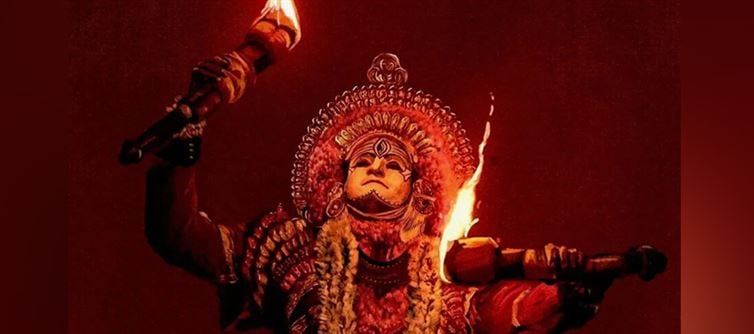
🔥 “Kantara Isn’t Just a Film, It’s a Slap on the Face of Power: 10 Brutal Truths About Revolution and religion They Don’t Want You to See”
Kantara is not your regular massy blockbuster. It’s not just about adrenaline-pumping Kambala races or the mysterious Bhootha Kola sequences. Beneath the cinematic fireworks lies a savage commentary on land, power, caste, and the dangerous game of religion.
This isn’t a movie. It’s a mirror that shows how the state, feudal lords, and Brahminical dominance have conspired for centuries to snatch land from those who lived in harmony with the forest long before kings or governments were even imagined.
But Kantara flips the script. It roars through Panjurli and Guliga — gods of the outcastes, protectors of the oppressed — and exposes the cracks in the fake narrative of “Hindu unity.”
Brace yourself. Here are the 10 savage truths about Kantara that no temple PR machine, no feudal dora, and no Brahminical history rewriter can digest.
1. 🐗 Land Belongs to the Forest, Not Your Goddamn Feudal Lord
Shiva’s dialogue — “This forest belongs to us before your government was even born” — is not cinema. It’s a declaration of war.
2. 🎭 Bhootha Kola Is Not “Hindu Devotion.” It’s the religion of the Rejected
Panjurli isn’t Vishnu’s Varaha avatar. Guliga isn’t some sidekick god. These are revolutionary spirits of outcastes, spat out by Brahminical history but worshipped by those who protect the soil.
3. 🍶 Liquor for the Youth, Land for the Dora
Devendra Dora doesn’t just steal land. He intoxicates a generation of Adivasi men to keep them weak and obedient. Same old formula: give them poison, take their paradise.
4. ⚖️ “Donation” Is Just Theft in Fancy Clothes
The king “donated” land to the Adivasis? Joke’s on him. It wasn’t his land to begin with. That’s the scam — first grab, then donate, then reclaim.
5. 💥 The Real Enemy Is Both the Dora and the State
Don’t get it twisted. The villain isn’t just the landlord. It’s also the modern indian state, waving “forest laws” as weapons to evict those who have lived there forever.
6. 🕉️ Brahminical hinduism vs. Outcaste Gods: The war They Hide
Every time Panjurli is equated with Vishnu, it’s another cultural theft. From Yellamma to naga worship, appropriation is the Brahminical superpower.
7. 👩🦰 The women Who Refuse to Bow
Leela riding Shiva’s bike after his arrest isn’t just romantic fluff. It’s symbolism. women like Shiva’s mother and Leela are the conscience and the spine of the Adivasi struggle.
8. 🔥 Caste Purity Is a Filthy Lie
Remember when Dora purifies his house after shiva enters? That’s not “tradition.” That’s untouchability on steroids, and Kantara doesn’t flinch from showing it raw.
9. 📖 history Was Written by the Winners, But the Forest Remembers
The Vedas, the Puranas, the Ramayanas? All re-written, re-edited, appropriated. But Bhootha Kola? It lives in the body, in dance, in the forest — beyond the reach of scriptures.
10. ⚔️ Panjurli and Guliga Are Not Peaceful Gods. They’re the Revolution Itself
These are not gods who uphold kingdoms like Rama or Krishna. These are gods who burn kingdoms down if they dare touch the forest. They’re the rage of the oppressed made divine.
Closing Punch
Kantara isn’t just folklore on screen. It’s a reminder that religion can be a revolution, but only when it belongs to the outcastes — not when it’s hijacked by Brahminical power.
Next time someone tells you Panjurli is just another face of Vishnu, remember: appropriation is counter-revolution. Resistance is worship.




 click and follow Indiaherald WhatsApp channel
click and follow Indiaherald WhatsApp channel